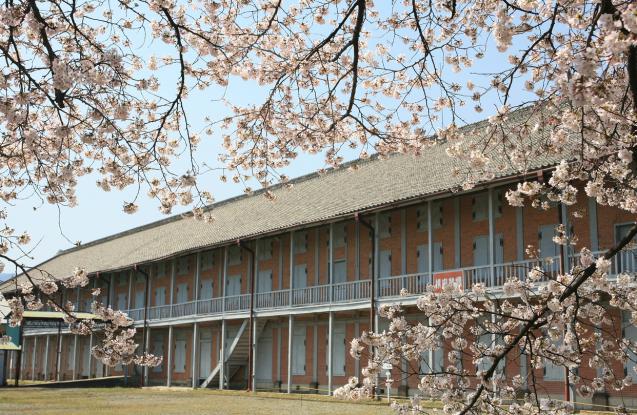
Tomioka Silk Mill is the first model silk-reeling factory which the Japanese government established in 1872. Japan opened its doors to the world in the mid 19th century and began to trade with Western countries in 1859. It became the centre of innovation for the production of raw silk and marked Japan’s entry into the modern and industrialized era, making it the world’s leading exporter of raw silk, notably to Europe and the United States.
Tomioka Silk Mill is consisted of four sites that correspond to the different stages in the production of raw silk: a large raw silk reeling plant whose machinery and industrial expertise were imported from France; an experimental farm for production of cocoons; a school for the dissemination of sericulture knowledge; and a cold-storage facility for silkworm eggs.
Tomioka Silk Mill was registered as a World Heritage Site in June, 2014 and designated as a National Treasure in December, 2014.
Things to see
The Tomioka Silk Mill consists of multiple buildings that have been very well preserved over the decades to closely resembles their original appearances. The most prominent buildings are the three long brick buildings: the silk reeling mill, the East and West warehouses.
Other buildings of note include the luxurious Brunat House, where the mill's French head manager, Paul Brunat, and his family lived, spacious dormitories for male and female French staff, ordinary dormitories for the Japanese workers who were mostly female and the chimney that was used for burning coal to power steam engines in the mill in the pre-electric era.
Tomioka Silk Mill can be reached in about 10 minutes of driving from the Tomioka interchange of Joshinetsu Motorway.
In the site, there are two municipal car parks near the Mill, they called it P1 and P2 and it cost 100yen.
The site is open in the public from 09:00 AM - 17:00 PM. It is closed every Wednesdays (or following day if Wednesday falls on a public holiday), December 29 to 31 and no closing days during Golden Week and the summer holidays.
Admission fee is cost 1,000 yen and visitors are only allowed to enter the silk reeling mill and the east warehouse where some exhibits are displayed with explanations in Japanese, but the other buildings can only be viewed from the outside.
However, guided tours are held in Japanese every 30 minutes (more often on busy days). Alternatively, visitors can rent audio guides (available in various languages) for 200 yen or use their smart phones to go on their own tour (free of charge).
Submit Itinerary
Signup
- Sign Up
- Already a member? Login Now!
